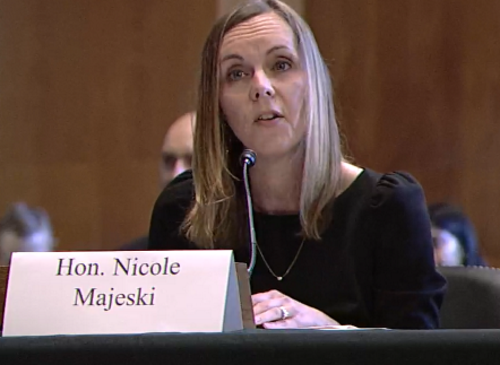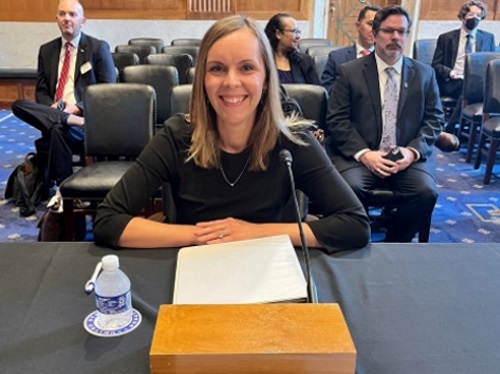During a Senate Environment and Public Works Committee hearing on September 21, Nicole Majeski – secretary of the Delaware Department of Transportation – detailed her agency’s efforts to incorporate resiliency into infrastructure projects statewide.
[Above photo by AASHTO]
That hearing elicited testimony from states and localities regarding ongoing implementation efforts related to the $1.2 trillion Infrastructure Investment and Jobs Act or IIJA, enacted in November 2021.
“Having this bill [the IIJA] finalized gives state DOTs and our contractor community certainty that we will continue to make needed infrastructure investments in the years ahead,” Majeski noted in her testimony. “The $1.6 billion in federal funding that Delaware is receiving through [the IIJA], along with our committed state resources, will allow us to deliver our largest capital program ever of $4.45 billion over the next five years.”
She explained that federal funding would be particularly critical to helping her agency deal with the effects of climate change.
“As the lowest-lying state in the nation, Delaware is seeing firsthand the effects that climate change and sea-level rise are having on our state,” Majeski noted. “We are increasingly seeing roads in our coastal areas overtopped with water not just during significant storms but with tidal flooding on sunny days. We estimate that we have $1 billion worth of infrastructure vulnerable to the impacts of climate change.”

To cope with such issues, Majeski said Delaware Governor John Carney (D) spearheaded the development of a Climate Action Plan in November 2021; a plan that led to the creation of a resiliency and sustainability division within Delaware DOT to centralize the agency’s efforts to improve the resiliency and sustainability of its transportation network.
“This division is focusing on the impacts climate change and sea-level rise are having on our transportation infrastructure; incorporating resiliency and sustainability measures in the construction and maintenance of our projects; implementing the electrification of our infrastructure and fleet; incorporating the use of alternative energy; and minimizing the environmental impacts caused by our transportation system,” Majeski noted.
“It will guide our work to develop solutions for these impacted areas and lead initiatives such as the broader electrification of our infrastructure to support and encourage the use of electric vehicles in Delaware,” she added. “Newly created formula funding through [the IIJA] will allow us to move forward with these critical projects.”
For example, in March, Delaware DOT initiated a plan to make the state’s road systems more resilient to climate change by tapping into the additional $160 million over five years the IIJA will provide to Delaware’s main highway programs.
The agency also received a $6.5 million Rebuilding American Infrastructure with Sustainability and Equity or RAISE grant from the U.S. Department of Transportation in August to begin designing an ambitious plan in the Route 9 area near New Castle. That project would reduce the number of through lanes on Route 9, with that “saved” lane space used to improve pedestrian and bicycle, and bus facilities as well as extra green space.

